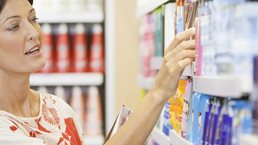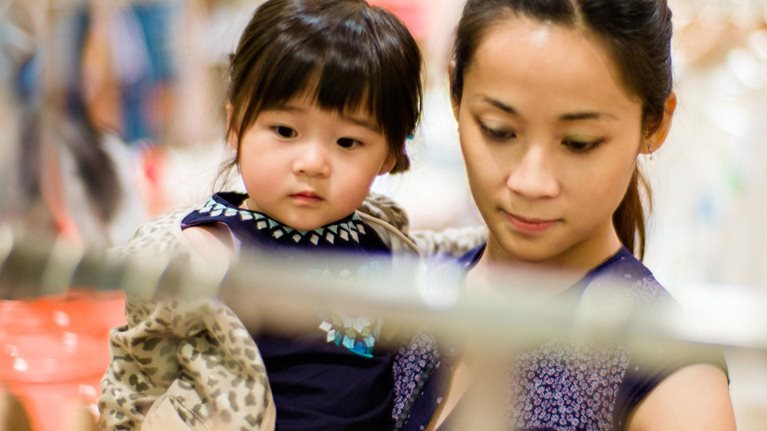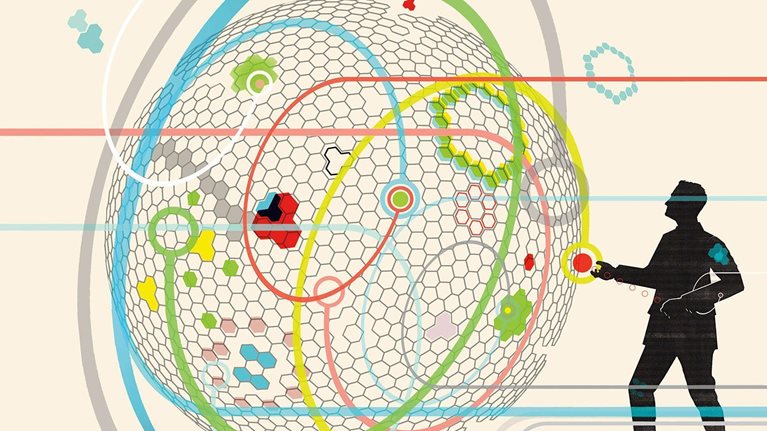Over the past few years, business leaders and investors have become increasingly aware of the vast potential in Africa’s burgeoning consumer market. The continent, now home to more than 1.1 billion people, will account for one-fifth of the world’s population by 2025. More and more Africans are entering the consumer class, with tens of millions emerging from poverty in recent years.
Yet there are well-known deterrents to doing business in Africa—political instability and poor infrastructure, to name just two—that can make companies hesitant to enter the market at all. That said, a few multinational consumer-packaged-goods (CPG) companies have managed to make important inroads in Africa. Their experience holds valuable lessons for others aspiring to capture the opportunities in one of the world’s fastest-growing consumer markets.
Young, urban, connected
The working-age population in Africa is growing at a clip of 2.7 percent each year (compared with 1.3 percent in Latin America and 1.2 percent in Southeast Asia). By 2025, nearly two-thirds of the estimated 303 million African households will have discretionary income. This massive expansion of the consumer pool—an addition of almost 90 million consumers in just ten years—will help fuel the continent’s GDP growth from 4.9 percent today to 6.2 percent in the next decade, far outpacing the global GDP growth rate of 3.7 percent.1
What’s more, African consumers are young and willing to spend. Fifty-three percent of income earners in Africa are between 16 and 34 years old—an age group that tends to be more aware of and eager to try new products. These consumers will contribute to more than $400 billion in total consumption growth in the next decade.
Driving this rapid growth are two trends that will continue to have a tremendous impact on Africa’s consumer market: urbanization and the rise of mobile communications. By 2025, almost half of Africans will be living in cities. Africa already has as many cities with more than one million inhabitants as North America does (Exhibit 1). In the largest African cities, consumption growth can rival even that of major cities in Brazil, Russia, India, or China: for example, between 2010 and 2020, incremental growth in food and beverage sales in Cairo will total approximately $3.9 billion, compared with $3.7 billion in Brasília and $3.3 billion in Delhi. This concentration of consumers bodes well for CPG companies that can secure distribution in these fast-growing cities.

Mobile technology is also changing the game. Mobile penetration in Africa, estimated at 89 percent at the end of 2014,2 is nevertheless growing fast and enabling transactions such as money transfers and microfinance. Kenya’s mobile-payments platforms, for instance, handled more than $2 billion per month in transactions in 2013.
The challenges
But just as the potential of Africa has been widely acknowledged, so too have the perils of doing business there. Despite recent progress, several hurdles remain.
Political instability and conflict. Wars and authoritarian governments continue to adversely affect business and policy in many countries. According to world freedom indexes, which measure political and civil liberties, of 54 African nations only 10 are considered free, 22 are considered partially free, and 22 are considered not free.3
Poor infrastructure. Although many African cities now have modern road systems, only about one-third of Africans live within two kilometers of a paved road that is usable year-round.4 Travel within the continent is prohibitively expensive and difficult, with transportation costs five to eight times that in markets such as Brazil or Vietnam. About 70 percent of the population has no access to electricity. These problems constrain not just consumer demand but supply as well; ports in many African nations are characterized by capacity issues and high costs.
Linguistic diversity. To communicate effectively with African consumers, companies need to deliver their marketing messages in a plethora of languages. South Africa has 11 official languages. Nigeria has only one—English—but Nigerians speak more than 500 local languages. Further complicating consumer communications is the continent’s low literacy rate of 62 percent. In some countries, including Burkina Faso and Niger, the literacy rate is below 30 percent.
Differences in consumer behavior. Not only do Africans in different countries speak different languages; they also make buying decisions differently. Take price sensitivity, for example: most Angolans look at advertisements and comparison shop to get the best prices, but only 27 percent of Kenyans do the same. Opinions about brands differ by country and region as well.5
A fragmented retail market. Africans buy groceries primarily from neighborhood kiosks or independently owned convenience stores; in many countries, the percentage of groceries bought in supermarkets is in the low single digits. An exception is South Africa, where supermarkets account for an estimated 75 percent of grocery sales.6
Low data availability and quality. Historically, there’s been a dearth of economic data and market research about most parts of the continent except for the largest cities. Companies sometimes extrapolate existing data on big cities to the national or regional level, but such an exercise only yields inaccurate insights.

Would you like to learn more about our Consumer Packaged Goods practice?
Lessons learned
In spite of these serious challenges, pioneering companies have been able to make Africa a part of their success story. More than 400 companies generate at least $1 billion in Africa-based revenues. Coca-Cola, Nestlé, and Unilever, among others, have been on the continent for decades and enjoy significant market share in their categories; P&G has increased its African business more than tenfold in the past ten years. In our experience, consumer companies that win in Africa are those that heed the following four imperatives.
Take a granular view of growth
The most successful entrants into Africa are those that have been careful and selective about the markets they enter. Instead of seeking to build a presence across entire countries, they’ve targeted the fastest-growing cities or city clusters—urban centers where per capita income and consumption spending far exceed the national average. Per capita income in Nairobi, for instance, is three times that in Kenya; Lagos residents on average earn twice as much as Nigerians overall. The capital city of Luanda accounts for 45 percent of total consumption in Angola. In 2025, almost 60 percent of consumption spending in Africa will come from the 20 largest cities.
A city-based strategy is essential in Africa, given the rapid pace of urbanization and the differences in growth rates even among cities within the same country. But choosing the highest-potential cities is just one part of the puzzle; getting the timing right is another. Leading companies develop fact-based forecasts of the readiness of markets for specific product categories.
Consumer demand for a particular product or category typically follows an S-curve, with per capita income as the main variable. Exhibit 2 shows that men’s grooming products (such as razors and blades), for instance, are already in the “hot zone”—where penetration growth accelerates significantly—in many African cities. To be able to predict when consumer demand for a category will take off, a company must have a granular understanding of economic indicators, local-market trends, and statistical growth models.

A global packaged-food manufacturer started with a broad strategy, but has since narrowed its focus to 15 cities that collectively represent about 25 percent of the total growth in packaged-food sales expected across Africa in the next five years. The company analyzed several subcategories and found, for example, that in nonalcoholic beverages, 10 cities in five countries will contribute 25 percent of total growth, while in the dairy category, 10 cities in six countries will contribute 23 percent of the growth. Such insights enabled the company to allocate resources to the most promising opportunities.
Tailor the offer to local needs and preferences
Companies must seek to understand local needs and preferences that drive mass adoption of their products, then tailor their offers accordingly. P&G changed the formulation of its Ariel detergent in Nigeria to make it lather faster and with less water, having discovered that Nigerian consumers see lather as an indicator of a detergent’s quality and effectiveness. SABMiller created a beer specifically for Onitsha, a large commercial city in southeastern Nigeria, and gave it a local identity; the beer’s label features a rising sun, a cultural symbol of Onitsha’s Igbo people. The beer is less bitter than typical European lagers, making it better suited for drinking in hot weather. In Zambia, SABMiller’s brand is Mosi (which is what Zambians call Victoria Falls), with a label that shows the waterfall.7
Consumer companies must become aware of not only local product preferences but also local buying behaviors. For example, we found that in Lagos and Luanda, consumers perceive low-priced food items to be of questionable quality, whereas consumers in Abuja, Accra, and Nairobi don’t share the same perception and thus wouldn’t hesitate to buy discounted food. In-country teams, tasked with gathering consumer insights and conducting pilots and concept tests, are crucial to CPG companies’ success in local markets.
So, too, is designing a brand-pack-price architecture that covers all the different tiers in a market, from low end to premium. A company might introduce smaller packs or new pack configurations (such as shampoo in sachets) at price points that can attract the lowest-income consumers. But, particularly in categories where brand consciousness is high, it’s also important to offer “aspirational” products—premium brands with recognizable packaging—at price points well within the reach of Africa’s rising middle class.
In addition, CPG players can learn from—and perhaps even partner with—homegrown businesses that have tailored their offers to African consumers. Nigerian e-commerce pioneer Konga, for instance, established pickup locations and a “pay on delivery” service to address Nigerians’ concerns about disclosing their home address or paying online.
Create a bespoke route-to-market model by geography and channel
Once a company has prioritized the highest-growth cities and defined a portfolio of products for them, it must then make sure that the products are available for sale in those cities. Effective distribution is the single most important determinant of success in African consumer markets.
The fragmented retail and wholesale landscape means that, in most African countries, there’s no ready-made national—or even regional—network of distributors. Winners develop a route-to-market model that focuses first on the most attractive channels. In Ghana, for instance, CPG companies don’t need their products to be on supermarket shelves; the most pervasive and fastest-growing retail outlets are open-market stands and neighborhood kiosks. A confectionery manufacturer mapped those outlets in Ghana’s largest cities, segmented them by sales volume, and tailored a route-to-market model for each segment: for example, small neighborhood kiosks would receive deliveries six times a week via a distributor’s motorized tricycles, whereas larger kiosks would receive van deliveries three times a week, plus a visit every two weeks by a sales representative who would provide merchandising support and advice.
Winners forge strong relationships with carefully chosen trade partners. Companies would do well to select distribution partners that have sufficient scale—that is, partners that earn economic returns at least ten percentage points above the prevailing rates for borrowing in the market—to increase their chances of having a long-standing and stable partnership, as smaller players typically struggle to maintain cash flows and may not stay in business for long. And to guarantee enough attention from a distribution partner, a company should aim to represent at least 25 percent of that partner’s profits. Product or category exclusivity is, of course, preferred but certainly not required. More important than exclusivity are trade terms that reward growth and sell-through of products.
Diageo, the global alcoholic-beverages company, launched its ambitious “Route to Consumer” program in 2013, with the goals of expanding distribution and driving activation in retail outlets around the world. In Nigeria’s southern states, for example, Diageo is expanding coverage from 8,000 outlets to many more of the 45,000 outlets it identified in a recent market census. The company has begun zeroing in on the outlets it can serve profitably and plans to ramp up its sales force accordingly. In a similar effort under way in Ghana, Diageo has expanded its coverage by 20 percent and added more than 140 people to its sales force.8
Build a large, well-equipped sales force
Indeed, one common mistake companies make is to underestimate the size of the sales force they will need in Africa. The high degree of retail fragmentation means consumer companies must employ large armies of salespeople—many more than they are accustomed to having in developed markets—to form and nurture relationships with thousands (or tens of thousands) of small retail outlets.
The most successful companies emphasize both capability building and performance management for their sales force. For instance, they provide detailed sales training and guidance, breaking down the discrete activities each salesperson is expected to do during sales visits and creating simple routines to follow. They rigorously track metrics such as the productive call ratio (the percentage of sales calls that result in the customer placing an order), effective distribution (typically measured as listings minus out-of-stocks), and sell-through rates. A few consumer companies—including British American Tobacco, Coca-Cola, and SABMiller—have built a reputation for developing the skills of their local African sales teams.
Winners also invest in technologies and solutions that allow their sales force not only to serve customers better but also to collect the data that is so scarce in most African markets. For example, Cadbury gives its more than 1,400 South African salespeople handheld devices that allow them to check inventory and pricing, place orders, and process invoices in a matter of seconds. Heineken’s sales representatives in Africa can use their company-issued tablets to access up-to-date account data, map out and schedule their sales visits, and take photographs of displays in retail outlets.
Consumer companies seeking a foothold in Africa must be prepared to invest for the long haul. It will, no doubt, be a challenging and sometimes frustrating journey. But the payoff will be well worth it: African consumers reward brands they trust, and a brand that wins them over can thrive in the market for decades to come.


